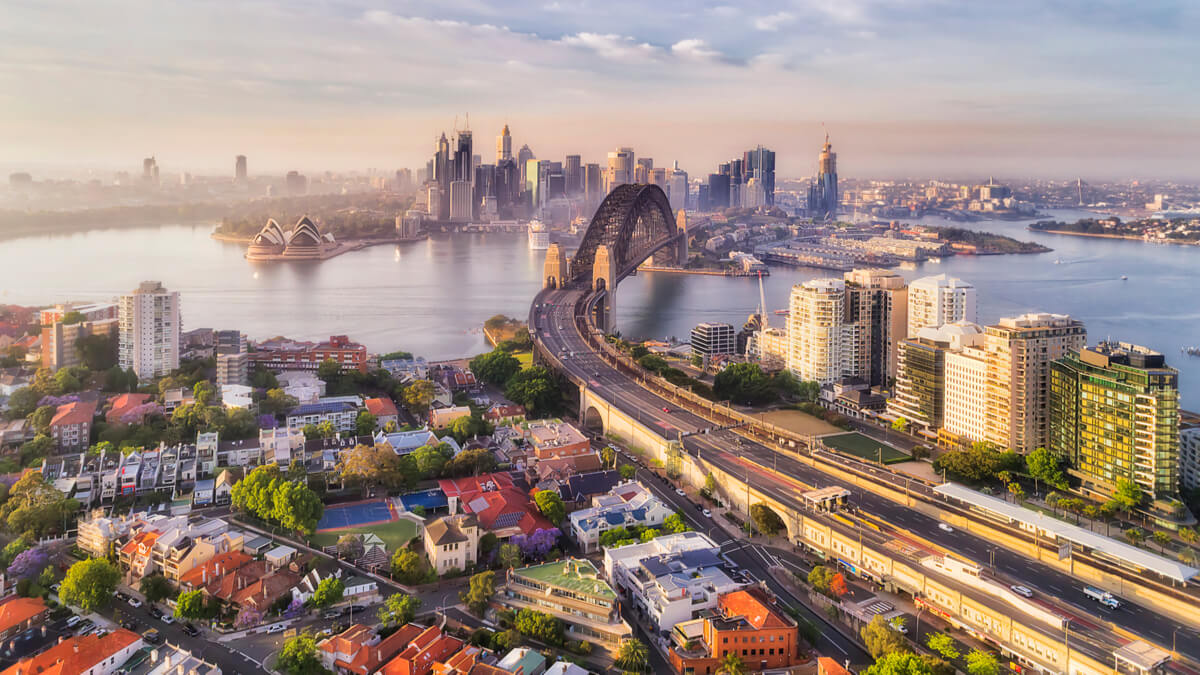Buying property in Australia as non-resident. What you need to know
Whether you’re considering moving to Australia and hope to buy a home or are interested in investing in the Australian property market while remaining...

It’s many people’s dream to study in the US, and with good reason. With so many top-class universities from the East Coast to the West, the US is a phenomenal place to further your education. Plus, you’ll have the chance to explore the rest of the country while you’re there.
You can’t just rock up, though. Like with any country, you need to get permission to study there before your course begins. This article will look at how you can sort out your US student visa, whether you’re coming from Australia or from elsewhere around the world.
As you’d expect, a student visa isn’t the only type of visa on offer from the US. Here’s a quick summary of the different categories of visa available overall.
This article, however, is just looking at student visas. So let’s examine that category in more detail.
Here are the different types of student visa available in the US.⁷
While the application process might vary according to which country you’re from, citizens of most countries should be able to apply for a student visa. Just check very carefully what documentation the authorities need to see.
The process of visa application has several stages. First you’ll need to fill out a form, and then you’ll probably need to go for an interview at an embassy or consulate. Before you begin to apply for a visa, you need to have applied for your study course. There’s a full overview of the application process below.
At each stage of the process, you’ll need to show various documents. Here’s a guide to which ones you’ll need.
DS-160 is a form you can fill out online.⁹ It’s for anyone applying for a “non-immigrant visa” - a visa that doesn’t give you the right to stay in the US indefinitely.
To fill out this form, you’ll need the following:¹⁰
| DS-160 requirement | Description |
|---|---|
| ID | Your passport - make sure it’s valid. |
| Photo | You’ll need to upload a photo of yourself.⁷ |
| Travel itinerary | If you’ve already made travel arrangements, you should be able to prove it. |
| Dates of your last 5 US visits | If applicable, have these dates to hand. You might even need information on other travel you’ve made in the last 5 years, to other places. |
| CV | You might need this too, to show information about your work and education history. |
| SEVIS ID and information about your school | Before applying for a student visa, you’ll need to have been accepted into a school (see below for more details). After acceptance, you’ll be issued a SEVIS ID, which you’ll need to provide as part of this form. You also need to provide the school’s address. |
| Other information | That’s not necessarily all. You can fill out a test version of the form first, to make sure you have everything you need. |
It’s very likely you’ll also need to attend an interview at a US consulate - in Australia, if you’re Australian. There are consulates in Sydney, Melbourne and Perth.¹¹,¹²
Once you’ve scheduled your interview at the consulate, you’ll need to go there with the following documents for an F or M category visa:
| Visa interview requirement | Description |
|---|---|
| Your appointment letter | Print out a copy of the letter that proves you have an appointment at the consulate. |
| Confirmation you’ve filled in the DS-160 form | Also print out the confirmation page from the form. |
| ID | Bring your valid passport and old passports as well. |
| Photograph | Bring a recent photograph. |
| Receipt | Bring confirmation that you’ve paid the visa processing fee. |
| SEVIS number | You should already have this by this time. |
| Supporting documents | You also need to bring a range of extra documents so that the consulate can learn more about you personally. These should include:
|
You should have a decent idea of what the process involves by now, but here’s an overview of the application process to get a US student visa: there are quite a few different stages to remember.¹³
There are quite strict rules about what sort of work you can do if you’re in the US on a student visa.
Those on an academic student visa can take certain jobs on campus during their first year, and certain off-campus jobs after that. With a vocational student visa, you can only start doing practical training after your studies are done.
Off-campus employment has to be related to your studies, and you need to get authorization to take it. So it’s best to check very carefully indeed, if you want to work.¹⁵
How much does a US student visa cost? It depends where you’re coming from, and exactly which visa you’re applying for. Also, there are 2 fees.
Firstly, the application fee for the relevant categories of visa is USD 160.¹⁶ Secondly, there’s a visa issuance fee. Australians applying for a category F, J or M visa will have to pay USD 105 for that.¹⁷
Paying those fees is likely just the first of various international bills you’re going to have to deal with. So it’ll pay to figure out how to transfer your money from your home country to the US with ease.
You’ll probably need to open a US bank account when you’re there, but the question remains of how to actually get any money into it. Traditional options include a wire transfer or simply travelling with cash. But Wise can also help: it’s a straightforward way to send money abroad at the real mid-market rate - the same rate you see on Google or XE, with no markup at all. The only fees you face are clearly stated upfront, and you could save a lot, compared to a bank transfer.
A borderless account with Wise is an even more convenient way to bridge the gap between your home country and the US. For no monthly fee, you can hold money in 40+international currencies, and you even get virtual bank details in US and Australian dollars, as well as New Zealand dollars, British pounds and euros. So you can start sending and receiving money like a local, even before your bank account is sorted out.
That’s the key information you need to know if you’re applying to study in the US. The process might sound a little intimidating, but with careful planning and enough time it should be straightforward enough to get sorted. Even if it takes a while, don’t forget to keep your eyes on the prize - a few years studying at your dream US institution.
1.https://travel.state.gov/content/travel/en/us-visas/tourism-visit/visitor.html#overview
2.https://www.dhs.gov/visa-waiver-program-requirements
3.https://travel.state.gov/content/travel/en/us-visas/employment.html
4.https://travel.state.gov/content/travel/en/us-visas/study.html
5.https://travel.state.gov/content/travel/en/us-visas/immigrate.html
6.https://travel.state.gov/content/travel/en/us-visas/other-visa-categories.html
7.https://travel.state.gov/content/travel/en/us-visas/study/student-visa.html
8.https://travel.state.gov/content/travel/en/us-visas/study/exchange.html
9.https://ceac.state.gov/genniv/
11.https://au.usembassy.gov/visas/nonimmigrant-visas/
12.http://www.ustraveldocs.com/au/au-niv-appointmentschedule.asp
13.http://www.ustraveldocs.com/au/au-niv-typefandm.asp
14.http://www.ustraveldocs.com/au/au-niv-visafeeinfo.asp
15.https://www.uscis.gov/working-united-states/students-and-exchange-visitors/students-and-employment
All sources correct as of 20 February 2019
*Please see terms of use and product availability for your region or visit Wise fees and pricing for the most up to date pricing and fee information.
This publication is provided for general information purposes and does not constitute legal, tax or other professional advice from Wise Payments Limited or its subsidiaries and its affiliates, and it is not intended as a substitute for obtaining advice from a financial advisor or any other professional.
We make no representations, warranties or guarantees, whether expressed or implied, that the content in the publication is accurate, complete or up to date.

Whether you’re considering moving to Australia and hope to buy a home or are interested in investing in the Australian property market while remaining...

Selling a property in Australia can be a complex process whether it's the first property or the tenth. Now imagine this process in a completely different...

Australia is a popular destination for many foreigners from around the world to move too. In particular, it is a popular place for citizens of France to move...

If you’re a Japanese expat looking to move to the Sydney area, you may be interested in looking for a Japanese school for your children. You may be keen for...

Many Australians look to emigrate at some point in their lives, and one of the most popular locations chosen is Hong Kong. With over 100,000 Australians...

Many Australians move to Singapore every year - in fact, as many as 20,000 Australian expats live in Singapore.¹ If you’re thinking of relocating to Singapore...